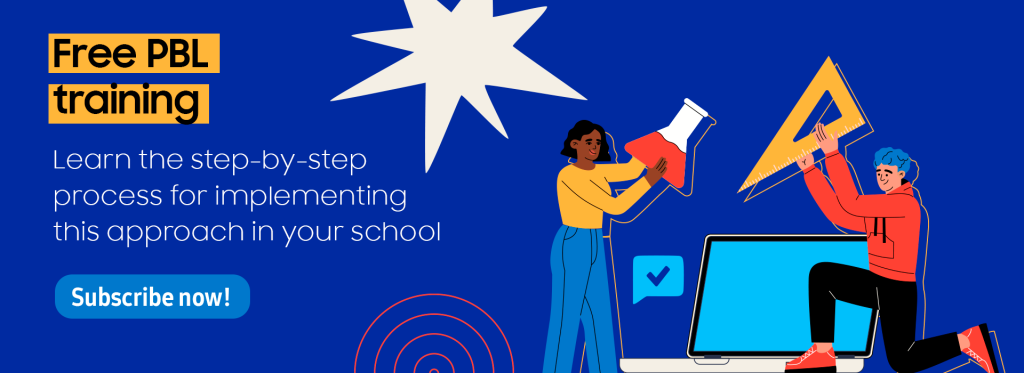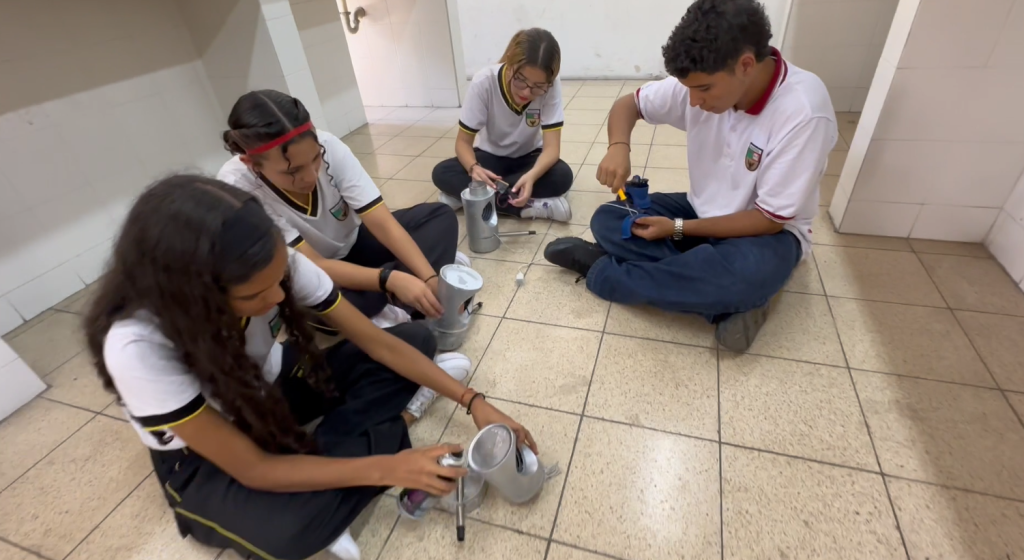Do you struggle to keep students engaged during class? Do you feel like some topics just don’t grab their interest? It might be time to try Project-Based Learning (PBL). This approach puts students at the center of the learning process and allows them to experience in practice everything discussed in the classroom. In other words, the PBL method in schools makes ideas tangible and puts knowledge to work.
Renata Salomone, a pedagogical coordinator and educational consultant, founder and director of MAPA Metodologias Ativas, explains how to introduce the concept into schools. Along with her partner Heloize Charret, who is also a consultant and coordinator, she’s collaborating with Porvir to develop a free training course for Solve for Tomorrow Latam. “Working with PBL promotes autonomy and critical thinking, as students need to understand the context from multiple perspectives, examine the causes and consequences of the problem at hand, and take initiative in proposing possible solutions,” she argues.

Subscribe here.
Salomone emphasizes that when students take part in projects, they’re invited to examine real, complex problems present in their daily lives. This helps them take classroom content beyond the school walls and use it to tackle real challenges in their communities. The specialist says that, starting with real-world situations, students transform academic knowledge into a living tool for understanding and acting upon the world.
Content is no longer treated as fragmented or out of context—it gains purpose through an investigative process that values student protagonism.
That’s how the project “Máquina Transformadora de Humo Vehicular a Tinta” (Vehicular Smoke to Ink Converter Machine, in English), was able to relate an everyday anecdote to a STEM (Science, Technology, Engineering and Mathematics) exercise. Developed by high school students in Colombia, it started when a student mentioned that car smoke hit his face and it felt like it painted him black. The mediator teacher, Alexander Echeverri, who teaches Physics and Chemistry, led the process in which the group was able to put their ideas into practice and create a mechanism that actually turns this smoke into paint. They used theoretical knowledge, but built a prototype from scratch for the benefit of society. Find out more here about this initiative, which won Solve for Tomorrow in the country in 2023.
Salomone underscores that this is the strength of the PBL method in schools: knowledge moves beyond memorization to become a tool for inquiry, hypothesis-building, and evidence-based decision-making.
This leads to deeper conceptual understanding, as students not only grasp what to learn but also why and how to apply that knowledge.

Understand why the PBL method in schools fosters autonomy and creativity
PBL promotes a broad set of soft and professional skills that are essential for life in society and the world of work, such as empathy, as students need to understand the point of view of other people impacted by the problem. “They learn to listen, talk, respect different opinions and consider different contexts, which contributes to a more ethical and collaborative attitude,” says Solomone.
By working on group projects, students can go far beyond the routine of tests and lectures: they learn to cooperate, take collective responsibility and deal constructively with conflicts.
When they experience situations in which they have to decide together, organize tasks, offer and receive feedback, students develop essential skills such as negotiation, assertive communication and time management – skills that are increasingly valued both inside and outside school. “In this way, PBL not only contributes to learning academic content, but also prepares young people to act actively, collaboratively and consciously in society and the job market,” concludes the pedagogical coordinator.
In addition, the PBL method in schools promotes autonomy, as it challenges students to plan, investigate, create and revise solutions to real problems, stimulating critical thinking, creativity and self-regulation. For teachers, implementing PBL is an opportunity to transform their classroom into a dynamic, participatory environment in line with the demands of the 21st century, making learning more meaningful and engaging.
This is also what teacher Erik Vidal realized. He is the mediator of the “SIFT” project, a Solve for Tomorrow finalist in Peru in 2023. The team discovered how to turn PET bottles, such as soft drink bottles, into raw materials to help patients with health problems linked to trauma, diseases of the central nervous system, such as strokes, motor impairments of the hand, fingers and others. “The experience was a lesson in how to behave professionally, being responsible and accepting our own mistakes, as well as making the necessary corrections,” said the educator. Read more about the innovation here.





